Extinct animals and insects. Animals that no longer exist
Something is constantly changing in nature, and these changes can be either minor or global. Unstable climate, epidemics, environmental pollution, deforestation - all this negatively affects the animal world. All forms of life on Earth are closely interconnected and the disappearance of one species or another affects other types of the ecosystem. The fact that there are rare and endangered animals on our planet is mainly the fault of humans.
Intensified hunting at the end of the Ice Age led to the extinction of the mammoth, woolly rhinoceros, cave bear and big-horned deer.
The invention of fire by man brought a lot of harm to the animal world. Fires have destroyed vast areas of forests.
Negative human influence on animal world intensified with the development of agriculture and cattle breeding. The result of this is simply disappeared animals and birds that have lost their habitat, as dense forests were replaced by steppes and savannas.
Caring for animals and plants has long been the task of the International Union for Conservation of Nature. Other organizations are also working on this. Rare and endangered animals (as well as plants) are listed in the Red Book. The country in whose territory endangered species live has a responsibility to all humanity for their conservation. Currently, conditions for conservation are created in nature reserves and sanctuaries where they are cared for, fed, and protected from diseases and predators.
Special pages of the Red Book have an ominous name - the Black Book. It records which animals have disappeared forever from the face of the earth since 1600. The Black Book is a warning to people and a reminder of those representatives of our world who can no longer be returned. The book of extinct animals is constantly updated. There are already several hundred species on its pages. And this is a very sad statistic.
This article describes some animals that have disappeared due to human fault.
Tasmanian or marsupial wolf
This animal is native to mainland Australia and the island New Guinea. For the first time, the marsupial wolf had to change its habitat after people transported it to the island. The marsupial wolf, forced out by them, ended up on the island of Tasmania, where local farmers began to mercilessly exterminate it, trying to protect the sheep.
The last representative of the species was killed in 1930. The date of its final disappearance is considered to be 1936, when the last Tasmanian wolf died of old age in the Australian Zoo.
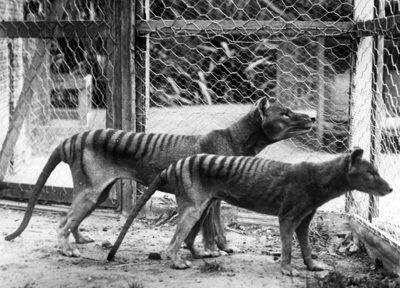
Woolly Mammoth
There is an opinion that the birthplace of this animal is Siberia, and later it spread throughout Europe and North America. The mammoth was not as huge as is commonly believed. It was slightly larger in size than a modern elephant.
These animals, which disappeared because of humans (presumably), lived in groups. They moved from place to place in search of food, of which they required considerable quantities. The group of mammoths was led by a female.
The complete disappearance of this animal species occurred approximately ten thousand years ago. Modern researchers are inclined to believe that the main reason for the extinction of mammoths was people, although there are many other theories (climate changes, epidemics, etc.).
Mauritian dodo (dodo)
This bird has long been considered mythical, not existing in nature.
And only after a specially organized expedition to Mauritius discovered the remains of the dodo, the existence of the species was officially recognized. In addition, it was proven that it was people who exterminated these birds.
The Dutch sailors who discovered it in 1598 became an existential threat. The Mauritian dodo disappeared completely probably in 1681. Travelers contributed to this, as well as animals brought by colonists to Mauritius.
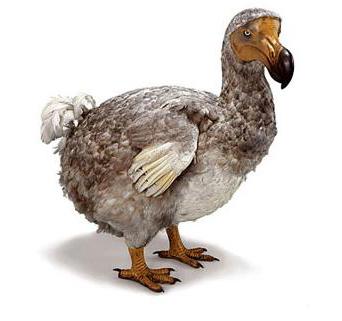
Sea cow
An expedition discovered this animal in 1741. Physician Georg Steller is the author of the detailed description sea (Steller's) cow. In fact, the new species was named after him.
The animal, living on the coast of the Commander Islands, was enormous in size and inactive. The lack of fear of people and tasty meat became the reason for its complete extermination just thirty years after its discovery.
Meat and fat were used for food, and boats were made from skins. The process of catching and killing a sea cow was often very cruel: the animal was thrown with spears and allowed to swim away in the hope that the body of the dead cow would be washed ashore.
The species was completely exterminated in 1768.
Passenger pigeon
By the beginning of the nineteenth century, these birds were the most common on Earth, but despite this, they failed to survive.
Pigeons, whose place of residence was the territory of the modern USA and Canada, were actively hunted by the colonists who arrived in America.
The number of birds decreased gradually until about 1870, then there was a sharp decline in their numbers. The last representative of the species was found in wildlife in 1900.
The year when this species completely disappeared from the face of the earth is considered to be 1914, when a bird named Martha died in one of the zoos.
North African cow antelope
An animal from the subfamily of large antelopes that live in Africa disappeared from the map of the Earth in the mid-twentieth century.
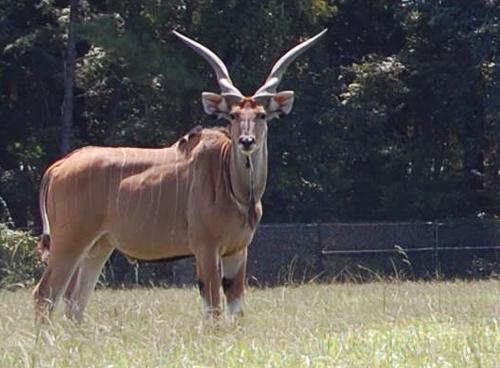
Due to the fact that these animals were actively hunted, the last representatives of this species could be found only in places on the African continent that were very inaccessible to humans. In 1954 finally.
Javan tiger
In the nineteenth century, this tiger could be found on the island of Java. The animal constantly annoyed local residents, which may have been the reason for the active hunt for it.
By 1950, there were about 25 tigers remaining in Java, and half of them lived in a specially created reserve. Unfortunately, this did not help save the population - in 1970, only seven tigers remained.
In the same year, the animal completely disappeared from the face of the earth. Although there are still occasional reports that a Javan tiger has been discovered on the island again. But there is no documentary evidence of these cases.
Zanzibar leopard
The history of the destruction of this animal is very unusual. The Zanzibar leopard was deliberately exterminated by local residents, going on hunts with the entire village. Moreover, it was not the meat or the skin of the animal that attracted people. It was believed that this leopard is associated with witches, who breed and train representatives of the species, and later use them as assistants in their dark deeds.
The extermination of leopards began in 1960. These animals completely disappeared exactly thirty years later.
Iberian ibex
It is one of four species of Spanish wild goats. The animal did not survive to this day, and the death of the last representative was extremely absurd - a tree fell on the animal and crushed it.
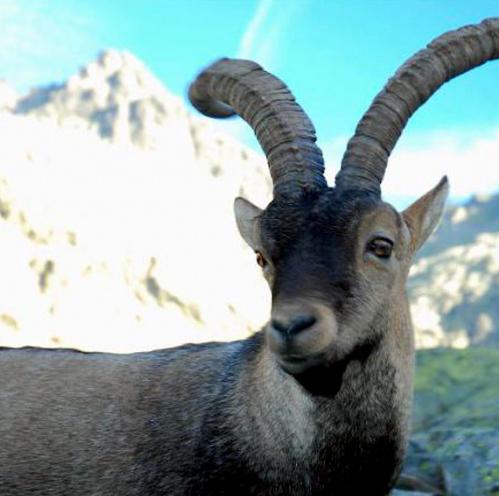
The year of complete extinction is considered to be 2000. Scientists tried to clone the Iberian ibex, but the cub could not be saved, as it had many birth defects.
Western black rhinoceros
Just a few years ago the animal was declared extinct. The reason for this was regular hunting in its habitat, which is Cameroon. These animals, which disappeared due to the fault of man, had very valuable horns, which were used in many recipes of Chinese medicine.
The search for surviving rhinoceroses began in 2006, but did not bring any results. Therefore, the species was declared extinct. In addition, other rhinoceroses are on the verge of extinction.
The year of complete extinction of the species is considered to be 2011.
This article presents only some of the animals that have disappeared due to human fault. Over the past five hundred years, more than 844 species have been extirpated.
Did you know that along with the famous Red Book, there is also a Black Book? This is a truly sad list, which includes already extinct species of animals and plants. And if we have hope (albeit weak) to preserve and even restore the number of populations from the Red Book, then we are no longer able to remove any species from the Black List. But how can we know that some animal has become extinct if we and none of our contemporaries have seen it? Based on bones found by paleontologists? But many of the fossil animals and plants are victims of their inability to adapt to changing conditions, in a certain sense - a dead-end branch of evolution. Is it possible to include dinosaurs, mastodons and mammoths in the Black Book? It turns out not. Although these animal species are already extinct. Read about the Red and Black Books of the world and Russia in this article.
Man and nature before the New Time: a fragile balance
Ancient people, especially during the Ice Age, lived by hunting. But, nevertheless, they did not cause significant damage to nature. There were a lot of animals, people's weapons remained too imperfect to bring rich trophies or catches. And homo sapiens as a species was not numerous at that time. People who lived at the dawn of civilization tried to adapt to natural conditions, and not modify them to suit your needs. They did not plow the land, did not cut down the forests and did not drain the swamps. They simply hunted, like wolves, lions and crocodiles do. Perhaps mammoths disappeared at the end of the Ice Age due to human fault. But they are not in the Black Book. Because only those extinct species of animals and plants that disappeared after 1500 are listed there. In the Middle Ages, people began to think about reducing the population of animals that were hunted. Lords and kings began to prohibit hunting in their forests. But such measures were taken for the sake of hunting, only in the future, when the number of game in the forest has been restored. But, in principle, before the New Time, nothing threatened existing populations. 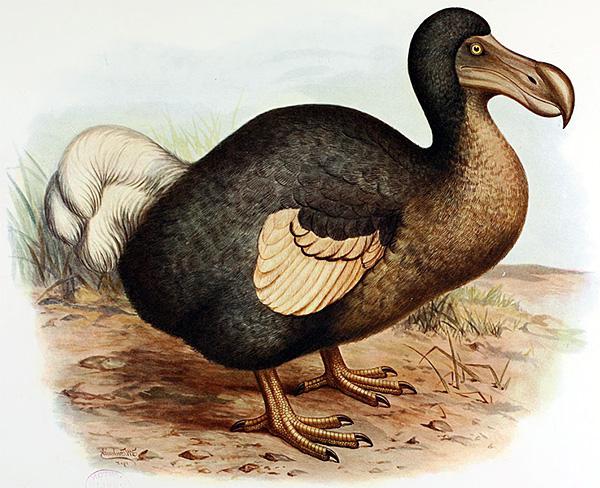
Why is 1500 a key reference date?
Before the discovery of America, and then Australia, Europeans had no idea about the existence of many species of animals and plants. Travelers who were the first to set foot on new lands made notes and sketches of previously unseen flowers, trees, birds and animals. But, unfortunately, along with the Europeans, a terrible danger came to the tropical paradise. Entire populations began to disappear. And this trend has not disappeared even now. Why do animal species become extinct? People with guns can kill more game. But hunting is not the only reason for this. Colonists often brought with them so-called aggressive species of European animals. They either exterminated endemics or laid claim to their food supply. Europeans began to actively develop new territories - primarily by cutting down forests, draining swamps, and plowing lands. With this economic activity, people deprived endemics of their usual habitats. The first victims were species that existed in Australia and New Zealand. There were simply no predators on the Green Continent and the archipelago. As a result of evolution, many species of birds have appeared that have forgotten how to fly. They became easy prey for people, dogs and cats. So, we don’t know for sure what happened to the wildlife of the New World before 1500. But what happened later is only our fault. 
People realized the danger only in the nineteenth century. Attempts have been made to restore some species, but they have proven clumsy. Animals were bred in captivity, and a couple of individuals were crossed, and then their children. As a result, such offspring turned out to be nonviable. Thus, the last passenger pigeon (named Martha) died in the zoo in 1914. Zoologist Gerald Durrell changed that. He turned menageries into zoos, where animals were kept in an environment close to natural. To successfully regenerate a species, several pairs of unrelated individuals are required. Once there are quite a lot of them, you can already think about how to release some of them into their natural habitat. And only after they successfully adapt, show the ability to obtain food on their own and give birth to healthy offspring, can we hope for the restoration of the species. However, even then these animals are considered “critically endangered” or “vulnerable”. 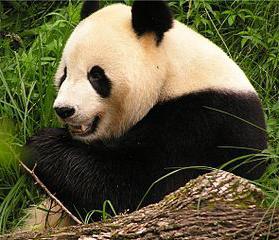
Symbols of threatened species
But as for those on the Black List, we can only hope that the last representatives of the disappeared population have become more cautious and are hiding somewhere in the wilds of the Amazon basin or in the depths of the oceans. Geneticists have an idea to revive extinct animal species by implanting their preserved DNA into the egg of a female of a similar type. However, so far such attempts have not been successful. At the beginning of this millennium, the International Union for Conservation of Nature (IUCN) summed up a sad result: over the past five hundred years, eight hundred and forty-four species of plants and animals have disappeared from the face of the earth. In the list of the Union they are classified by the abbreviation EX (Extinct). These are the subjects of the so-called Black Book, which lists species that disappeared after the death of the last individual. This does not include animals and plants that became extinct before 1500 - mammoths, dinosaurs. The list of species that have disappeared in modern times is published on the first page of the Red Books of the world, continent, region, country. Animals and plants are then classified according to their risk level. Topping this list is EW (Extinct in the Wild). The abbreviation means that in some zoos around the world one or two individuals still live, but this species is no longer found in the wild. Next come CR (critically endangered), EN (endangered), VU - vulnerable. The classification is assigned depending on the number of individuals and the extent to which natural habitat areas have been preserved. Rounding out the list are CD (species that are dependent on conservation efforts), NT (near vulnerable) and LC (little threatened). 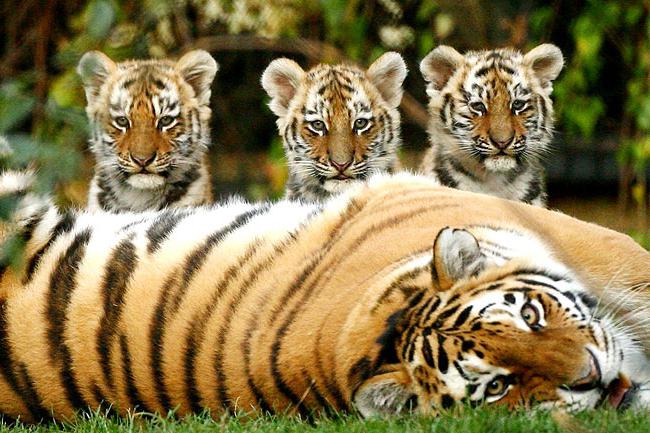
Is salvation possible?
The Red Book is not just a long list of endangered plant and animal species. This is the motivation of all humanity to make every effort to preserve the invaluable gene pool of the planet. Extinct species of animals - a photo of a sea cow, a stuffed animal of the last Carolina parrot, who died in 1918, and other evidence - serve as a reproach to us. But is it possible to save populations that are on the verge of extinction? Sometimes yes. Examples include Australian koalas, bison, and pandas. 
Rescue measures
In some countries, a species is considered extirpated, while in others there are still dozens or even hundreds of individuals. This is the situation with common brown bears in France. Animals are first raised in zoos. Then they are transferred to nature reserves. When there are enough of them, they are moved to their natural habitat. The main thing is not to delay salvation. There are now two turtles of the species Rafetus vietnamensis left in the world. But, judging by the fact that the female lays unfertilized eggs, her gentleman can no longer leave offspring. 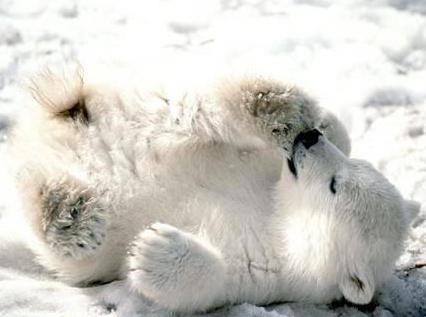
Black Book of the World
The very first animals to leave the earth were those that lived on isolated islands where there were no predators. Back in 1546, the rodents Plagiodontia ipnaeum and Quemisia gravis, endemic to the island of Haiti, disappeared. The reason for this was the destruction of natural habitats, as well as the introduction of ordinary ship rats, which occupied the ecological niche of the animals. A century later, the Black Book, which describes extinct animal species, was replenished with the blue-and-yellow macaw and the dodo Dodo. Man caused the greatest harm to nature in the nineteenth century. There are dozens of species that have disappeared forever. This includes sea cows, Mascarenotus owls, Steller's cormorants and many others. The quagga is especially worth mentioning. These zebra-like odd-toed ungulates lived in South Africa and were domesticated by humans. In fact, it is the only domestic animal that has gone extinct. Quaggas had very sensitive hearing and were used to guard herds. But the Boers exterminated these animals for their skins. In 1878, the last quagga was killed.
Black Book of the Russian Federation
Fortunately, Russia has huge areas, and its Asian part is almost undeveloped. Therefore, there are practically no extinct animal species in the country. However, as a result economic activity Some plants have disappeared forever. People are actively draining swamps and developing water meadows in river floodplains. And if the flora has been preserved in the forests, the same cannot be said about the meadow vegetation. The Black Book of Russia is compiled by region. Thus, in the European part of the country you will no longer find star cladonia, Norwegian astragalus, or Barguzin wormwood. Beyond the Urals you can no longer find common heather, beautiful feather grass, black alder and trellised onions. But the Volga cinquefoil (Potentilla volgarica) appears in two Black Books at once - Russia and the world. 
Red Book of the Planet
What does the International Council for Conservation of Nature mean by classifying a species as EN (Endangered)? This means that such organisms are threatened with complete extinction. Why and on what basis does the IUCN make this conclusion? Firstly, when there are critically few representatives of a given species, and secondly, when the habitats of these organisms are under threat. Now that a severe fight against poaching is underway, the second reason prevails. Many people respond to environmentalists' call to save orangutans or koalas, but not many realize that the survival of these species is directly linked to the reserve. virgin forests and providing these animals with sufficient food supply. Who is under threat and who does the Red Book care about? Endangered animal species, according to disappointing IUCN statistics, make up 40 percent of all currently known organisms. The genetic wealth of our planet is becoming scarce. The rate of extinction is not slowing down, but increasing. Most species have been included in the Black Book only in the last 150 years.
Critically endangered
Here we will name only 10 endangered animal species on the planet. This is a grizzly bear. The huge bear was once found from Alaska to Mexico. Now there are 50 thousand individuals left in Canada and the USA. This species appears in the Black Book of Mexico. The western gorilla is disappearing at a catastrophic rate. Over the past twenty years, the number of these primates has decreased by 45 percent. In addition to poaching and habitat destruction (deforestation), a huge risk factor is the Ebola virus, to which gorillas are extremely susceptible. Sumatran and Bornean orangutans occupy third and fourth positions. Despite all efforts to maintain small populations in national parks, the number of animals over the past 60 years has decreased by 80 and 50 percent, respectively. Risk factors include deforestation and the capture of cubs for resale. The black and Javan rhinos are critically endangered due to human superstition. All efforts by the authorities to protect species from poaching are ineffective. Since animal horn is recognized as an aphrodisiac in Chinese medicine, it is worth more on the black market than gold. Chimpanzees, like gorillas, are susceptible to fatal human diseases. These are also endangered species of animals. The list closes African elephant(in the Black Books of Gambia, Burundi and Mauritania), Galapagos sea lion and Grevy's zebra.
Endangered animal species in Russia
The government is taking a number of measures to restore the number of Amur tigers. However, poaching and migration of animals to China does not allow us to identify the true number of individuals. The Przewalski's horse was saved from extinction, just like the bison and other endangered animal species in Russia. As for the Far Eastern leopard, this species is still critically endangered.
Why is species conservation important?
There are four reasons for concern. The genetic wealth of our planet is diminishing by 1-5 species per day! This, in addition to moral problems, creates destabilization of ecosystems. The extinction of one species threatens the existence of others. Rare and endangered species of animals are irreplaceable genetic material. Artemisia annua, for example, contains a substance from which an anti-malaria drug is made. If this plant disappears, humanity could face a pandemic of this terrible disease. When a species goes extinct, it can lead to uncontrolled growth of other populations (including pests).
Nature is the first to pay for the great successes of human civilization. By ensuring a comfortable existence for themselves, people become responsible for the death of entire species of animals and flora. Extinct animals due to human fault - how many of them have disappeared from the face of the Earth forever? We have compiled a rating of the most amazing and beautiful creatures that people will never see again.
– a vivid example of man’s predatory attitude towards nature. The species was discovered by Bering's expedition in 1741. This animal, extinct due to the fault of man, was distinguished by a sedentary lifestyle and apathy. The sea cow, or cabbage fish, reached an impressive size - about 8 meters in length. One of the characteristics of the animal was its complete lack of fear of people. Unfortunately, these Marine life had tasty meat. By 1768, the modest population of sea cows had been decimated by humans. The closest relative of the sea cow is the dugong.
Javan tiger
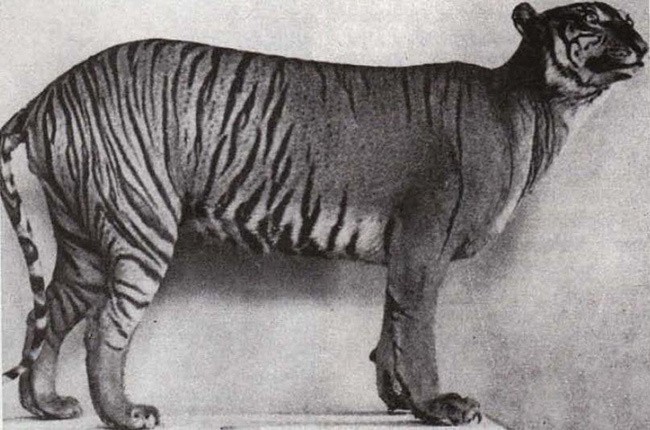
The list of extinct animals due to human fault continues. He belonged to the smallest subspecies of tigers. Habitat: Java Island. The reason for the extinction is active hunting and destruction of the animal’s habitat by humans. By the mid-80s XX century, only three individuals of the Javan tiger have survived. He was last seen in 1979. The species is considered extinct, although there are occasional reports of tigers being seen on the island of Java. Zoologists are skeptical about this, believing that a leopard is being mistaken for a Javan tiger.
Other subspecies of tigers are also on the verge of extinction. For example, the Sumatran tiger population currently numbers only 300 individuals.
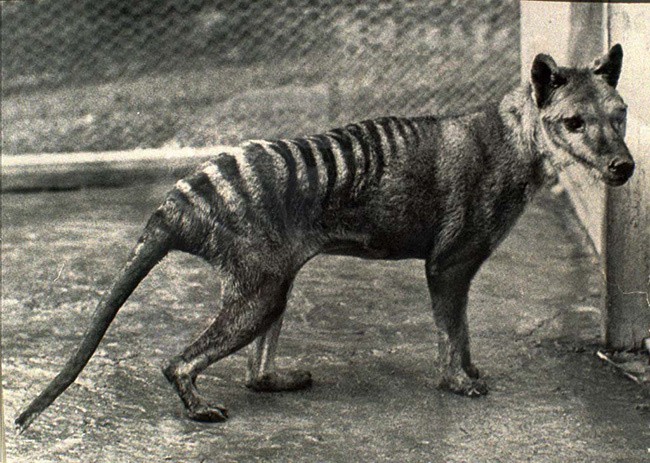
(thylacine) is the only representative of marsupial wolves in the world, completely destroyed by man. Habitat: Australia, New Guinea and Tasmania. Europeans first encountered the Tasmanian wolf in XVIII century. At the beginning of the 19th century, hunting for animals was opened. Farmers considered wolves the main enemy for their sheep. As a result, a few animals survived only in hard-to-reach places in Tasmania. IN XX century, due to the outbreak of canine distemper on the island, the population of the Tasmanian wolf declined catastrophically. Despite this, it was not listed as a protected species and hunting for it was not officially prohibited. The last wild Tasmanian wolf was killed in 1930. Scientists suggest that isolated representatives of the species could survive in hard-to-reach places on the island. Despite the high reward offered for the capture of the animal, there is no documentary evidence that the Tasmanian wolf is not extinct.
Mauritian dodo
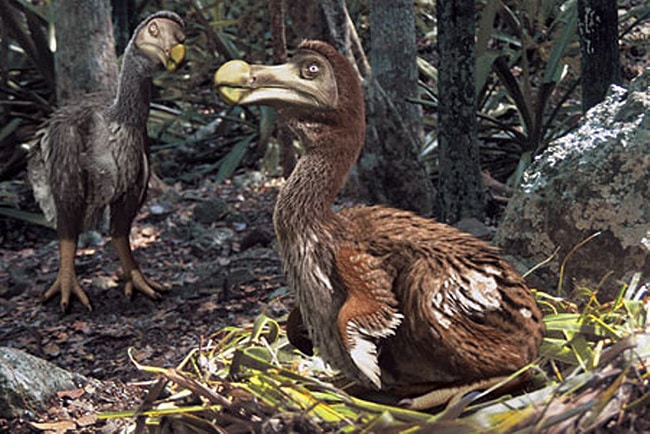
The most famous representatives of animals extinct due to the fault of humans include the dodo or. It disappeared so quickly after the discovery of this species of flightless bird by European travelers that for a long time scientists considered the dodo a mythical creature.
Habitat: Mauritius island. The dodo was first discovered by Dutch sailors in XVI century. From that moment on, the bird was subjected to intensive extermination and disappeared in the middle XVII century. The Dodo became famous thanks to Lewis Carroll, who made it a character in Alice in Wonderland. The writer identified Dodo with himself.
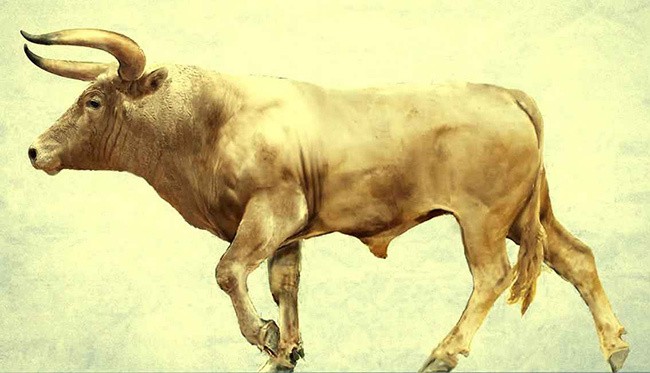
One of the most famous subspecies of the wild bull is another representative of animals that have become extinct due to human economic activity and hunting. The primitive aurochs were exterminated in Africa and Mesopotamia in the third millennium BC. In Central Europe, its population has begun to decline since deforestation. TO XV century, animals were taken under protection, but their numbers were steadily declining. The last round disappeared in the middle XVII century. Enthusiasts from different countries are reviving tours.
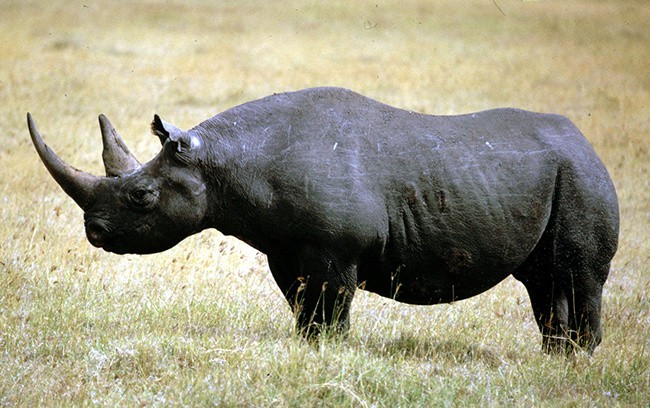
(Cameroonian subspecies) is another representative of animals that became extinct due to human fault. Its name is arbitrary, since the color of the animals depends on the color of the soil of the area where they live. Until the middle XIX centuries, the black rhinoceros was an ordinary inhabitant of Africa. But then, thanks to the belief in the miraculous power of the horns, a hunt was opened for them. Animal horns were also used as material for dagger handles. Now the total number of black rhinoceroses does not exceed 4 thousand individuals, but the Cameroonian subspecies did not survive extermination by poachers and was declared extinct in 2011.

The only representative of the genus became another sad example of animals, extinct due to human fault. Lived in North America and became extinct as a result of merciless hunting. The last Carolina parrots were seen in 1926. The species is officially declared extinct.
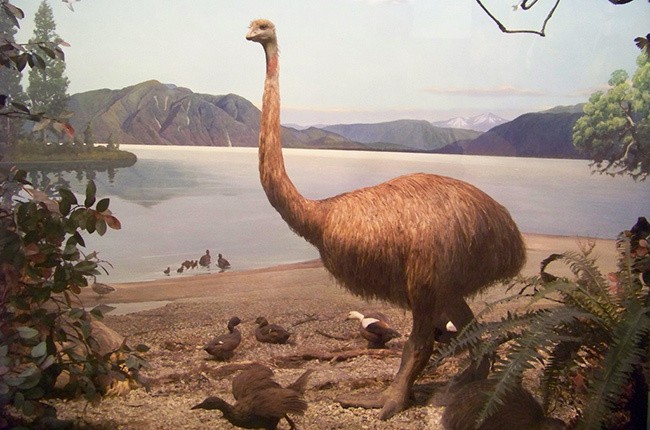
- giant wingless birds, extinct due to the fault of man in XVI century. Lived in New Zealand. Some species had gigantic size– up to 3.6 meters in height. Moas were herbivores. They ate fruits, leaves and shoots. Extinct at the beginning XVI century. The Majoris, the indigenous population of New Zealand, are to blame for the disappearance of these amazing creatures.
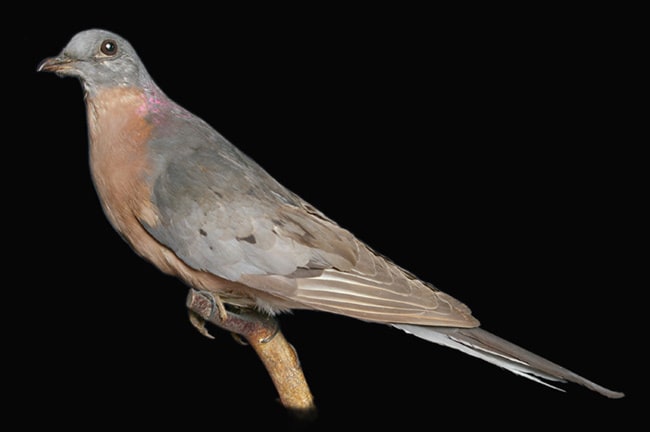
- an example of how the most common bird on Earth can be destroyed by humans. Lived in North America. The population decline began in XIX century. This was facilitated by many reasons, among which poaching was in first place. The meat of the passenger pigeon was very tasty, and the inhabitants of the northern states mercilessly destroyed the birds. The last representatives of the species disappeared at the beginning XX century.
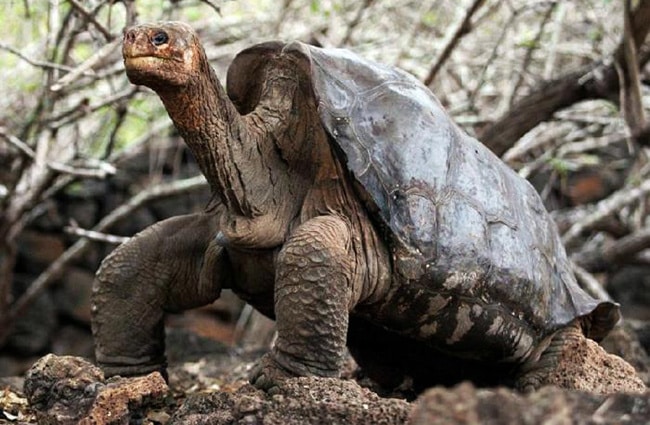
- in 1st place in the sad list of animals that have become extinct due to human fault.
Many people followed the fate of Lonesome George. He was the last member of the Abingdon elephant tortoise subspecies. Last years He spent his life on the island of Santa Cruz, where the Darwin Research Station is located. For many years, zoologists did not lose hope of obtaining George's offspring by crossing with related species, but the egg embryos turned out to be non-viable. On June 24, 2012, the last of the Abingdon giant elephant tortoises died at about 100 years of age. Now this subspecies Galapagos tortoises officially declared extinct.
Humans are to blame for the disappearance of elephant turtles. For hundreds of years they were used as live canned food, transported in the holds of ships.
The statistics on endangered animal species are horrifying. Thanks to human economic activity, we lose several species of animals, plants, birds and insects every day. We are the main cause of the catastrophic death of the animal and plant world of the Earth. Today, 40% of living beings are on the verge of extinction and this terrible figure is only increasing.
The extinction of many species of the animal world is explained by various natural reasons: ice ages, catastrophic meteor collisions, etc. However, the constant threat of destruction of the species comes from the most dangerous, highly adaptable species - Homo sapiens! Let's look at the top 10 extinct species, the disappearance of which (possibly indirectly) was caused by man:
10. Steller's (sea) cow
Photo 10. Steller's cow - the species was exterminated in less than 30 years by indigenous people and hunters [blogspot.ru]The sea cow (Steller's cow) is named after the Russian zoologist Steller, who first discovered and described this species of animal in 1741. The sea cow was slightly larger than a manatee, swam near the surface of the water and ate seaweed (hence the name “sea”). The weight of the cows was up to 10 tons, and their length was 25 meters. From the very beginning, the species was in danger of extinction, since the meat was very tasty and was widely consumed by the indigenous population. Next, fishermen and seal hunters joined the hunt for sea cows. Cow skins were used to make boats. As a result, the Steller cow species completely disappeared in less than 30 years.
9. The Quagga
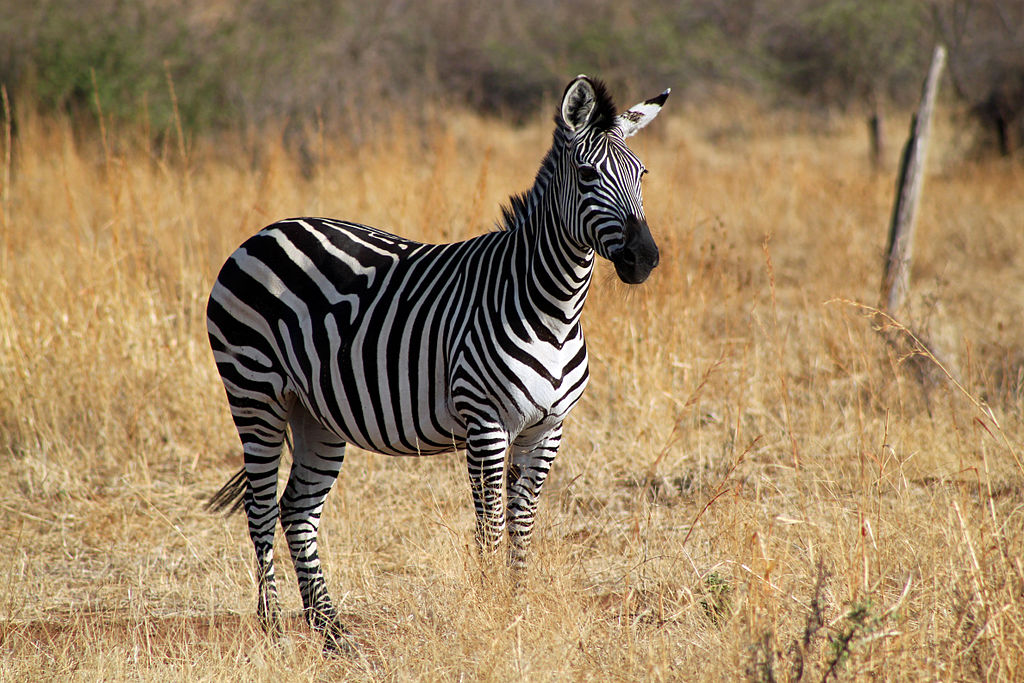 Photo 9. Quagga was exterminated by humans in 1878 for meat and skin. [wikimedia.org]
Photo 9. Quagga was exterminated by humans in 1878 for meat and skin. [wikimedia.org] The quagga lived in southern Africa and was similar in color to a zebra in front and horse-like in back. This is almost the only exterminated species that was tamed by people to protect herds. Quaggas had the ability to notice predators faster than cows, sheep, and chickens and warn their owners about the danger by shouting “quaha” (hence their name). Quaggas were destroyed by humans for their meat and skin in 1878.
8. Chinese river dolphin (“baiji”)
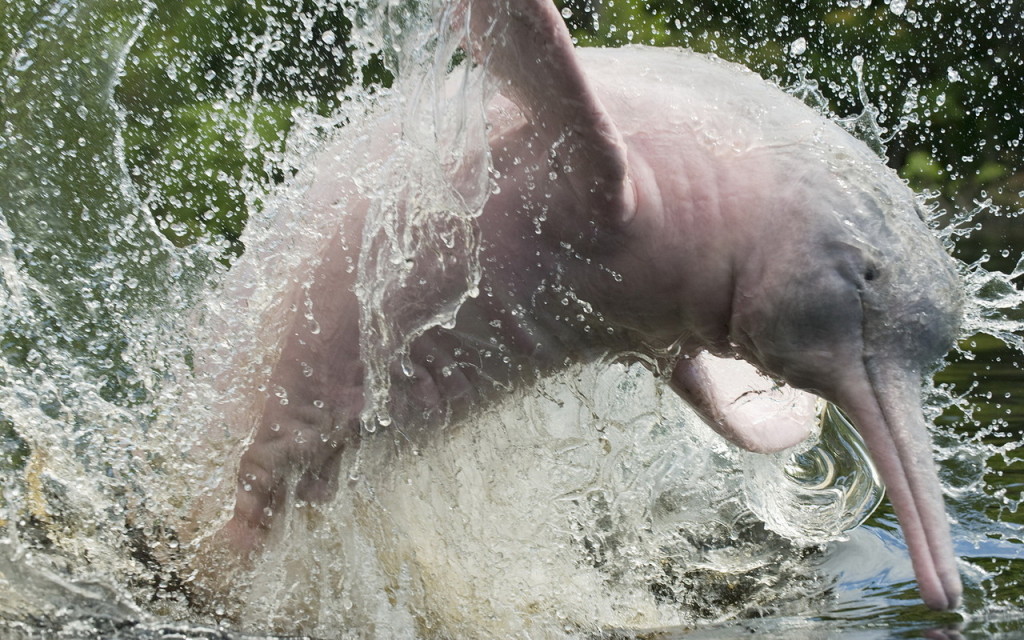 Photo 8. Chinese river dolphin became a victim of hunters and fishermen [ipkins.ru]
Photo 8. Chinese river dolphin became a victim of hunters and fishermen [ipkins.ru] The Chinese river dolphin belongs to the order of mammals, a representative of the river dolphins. The species was discovered in China (Yangtze River) in 1918. This is a light gray dolphin with a whitish belly, weighing approximately 42-167 kg, 1.4 - 2.5 meters in length. The 2006 expedition found no specimens of the Chinese river dolphin, most likely the species has completely disappeared (although in 2007 it was reported that 30 individuals remained in the Tianezhou Nature Reserve).
7. Saber-toothed tiger (Smilodon)
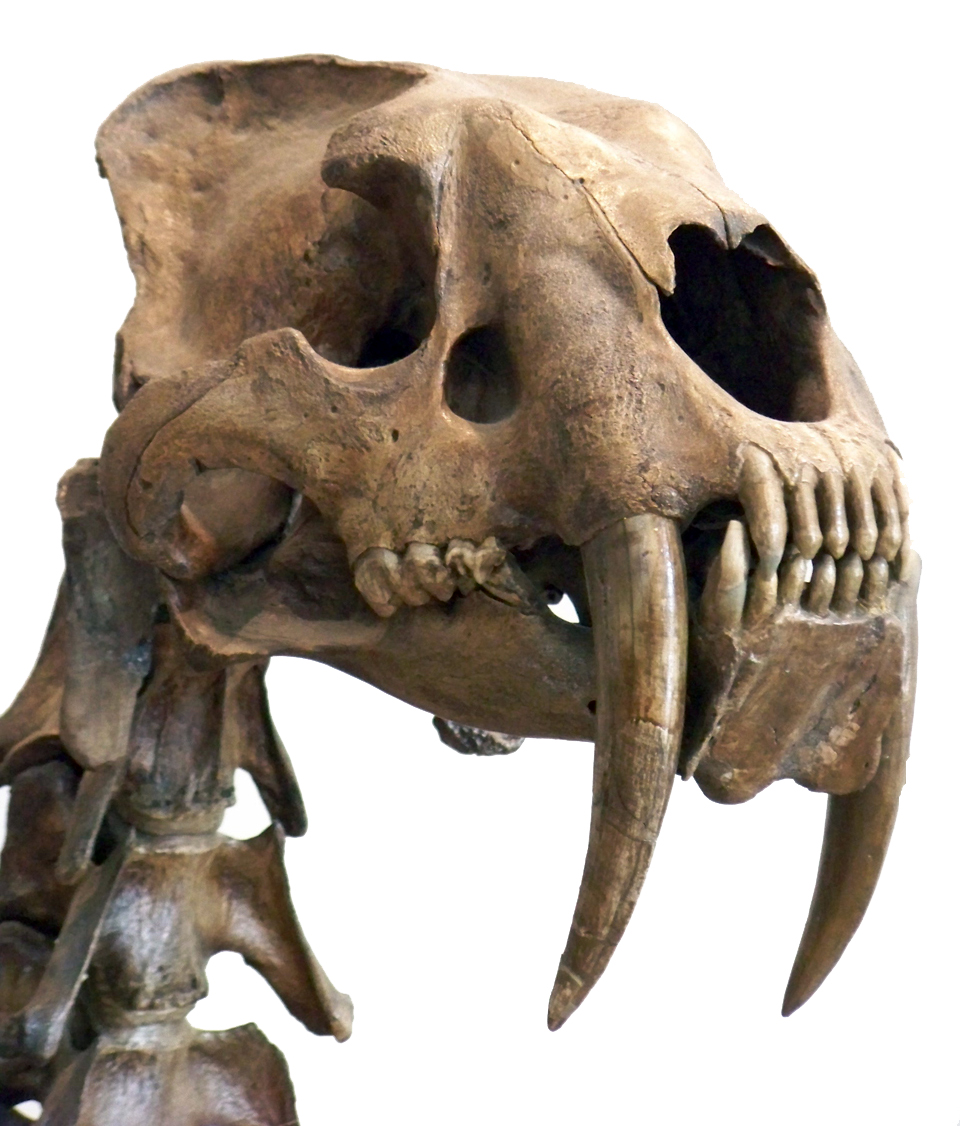 Photo 7. Smilodon lived from 2.5 million to 10 thousand years ago [wikimedia.org]
Photo 7. Smilodon lived from 2.5 million to 10 thousand years ago [wikimedia.org] Smilodon is an extinct species of saber-toothed cat native to North and South America, weighing between 160 and 280 kg and the size of a lion. A distinctive feature of the family were fangs, 28 cm long (including roots). The species has not been on Earth for more than 10,000 years.
6. Large rodent Josephoartigasia mones
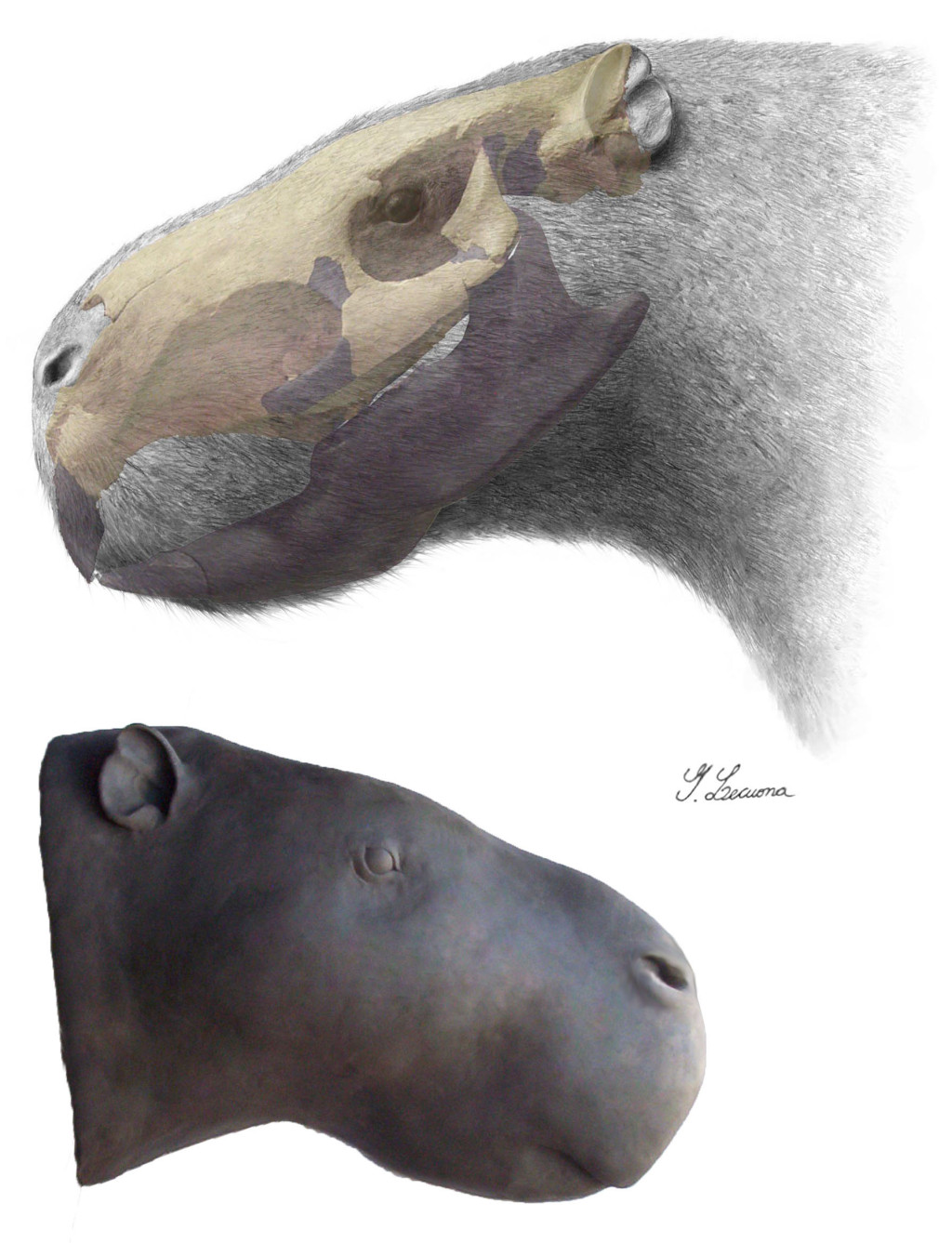 Photo 6. Josephoartigasia mones - the largest rodent on the planet [wikimedia.org]
Photo 6. Josephoartigasia mones - the largest rodent on the planet [wikimedia.org] The large rodent Josephoartigasia monesi was named after paleontologist Alvaro Mones. The species existed 2 - 4 million years ago in South America. Researchers discovered a rodent skull 53 cm long; the animal's weight was estimated to be more than 450 kg. This is the largest species of rodent on the planet.
5. Tasmanian wolf (thylacine)
 The Tasmanian (marsupial) wolf was exterminated by farmers
The Tasmanian (marsupial) wolf was exterminated by farmers The Tasmanian wolf is the only representative of the marsupial wolf, it is also called the thylacine. The species is native to Australia; individuals reach a length of 100-130 cm; height – 60 cm; weight about 25 kg. The first mention of the Tasmanian wolf was found in rock records no later than 1000 BC. e. Europeans first encountered the marsupial wolf in 1642. In the 30s of the 19th century, mass extermination of the beast by farmers began in order to protect their sheep. Thus, marsupial wolves survived only in remote areas of Tasmania by 1863.
4. Great Auk
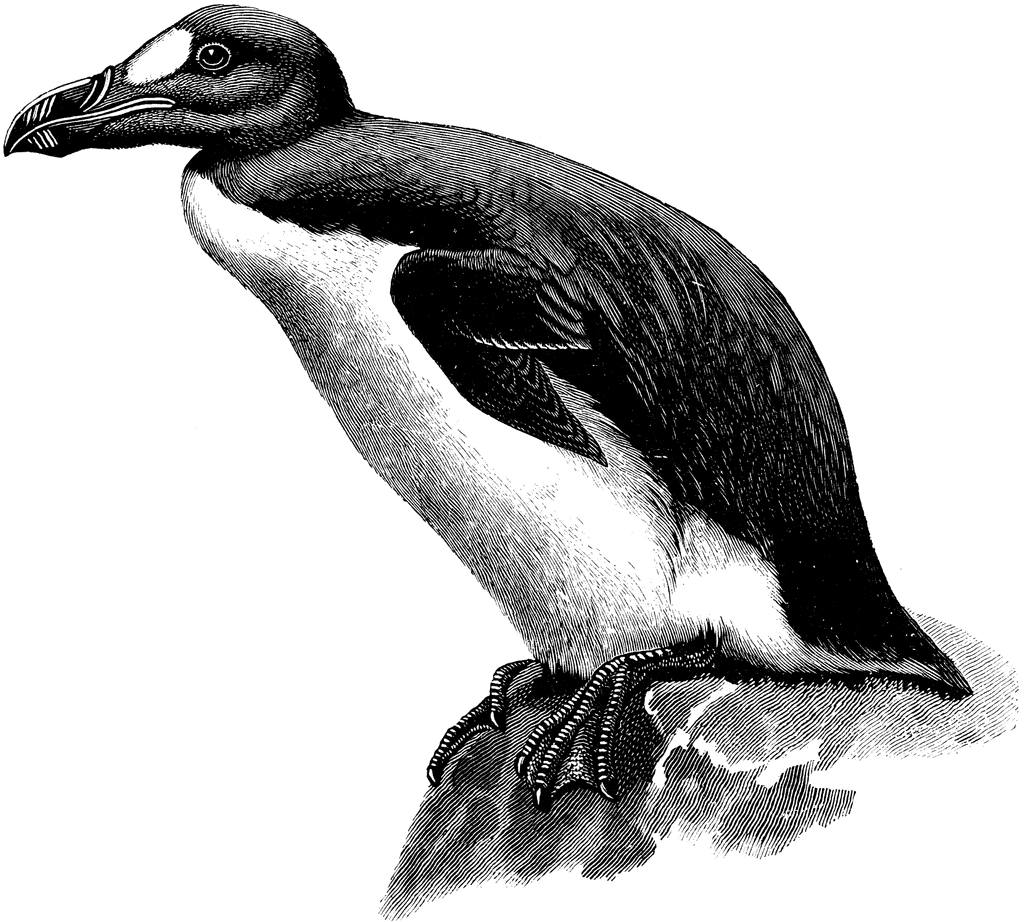 Photo 4. The last settlements of the great auk were destroyed in 1840 by hunters in Scotland [usf.edu ]
Photo 4. The last settlements of the great auk were destroyed in 1840 by hunters in Scotland [usf.edu ] Great auk - a large flightless bird reaching a length of 75 to 85 cm, weighing about 5 kg, lived in the waters North Atlantic. The great auk has been known to people for more than 100,000 years; indigenous people valued the birds for their tasty meat, eggs and down for making pillows. Due to excessive hunting of birds, the number of great auks has sharply decreased. By the mid-16th century, almost all bird breeding colonies were systematically destroyed. The last individuals were caught and destroyed on the islands in Scotland in 1840.
3. Passenger Pigeon
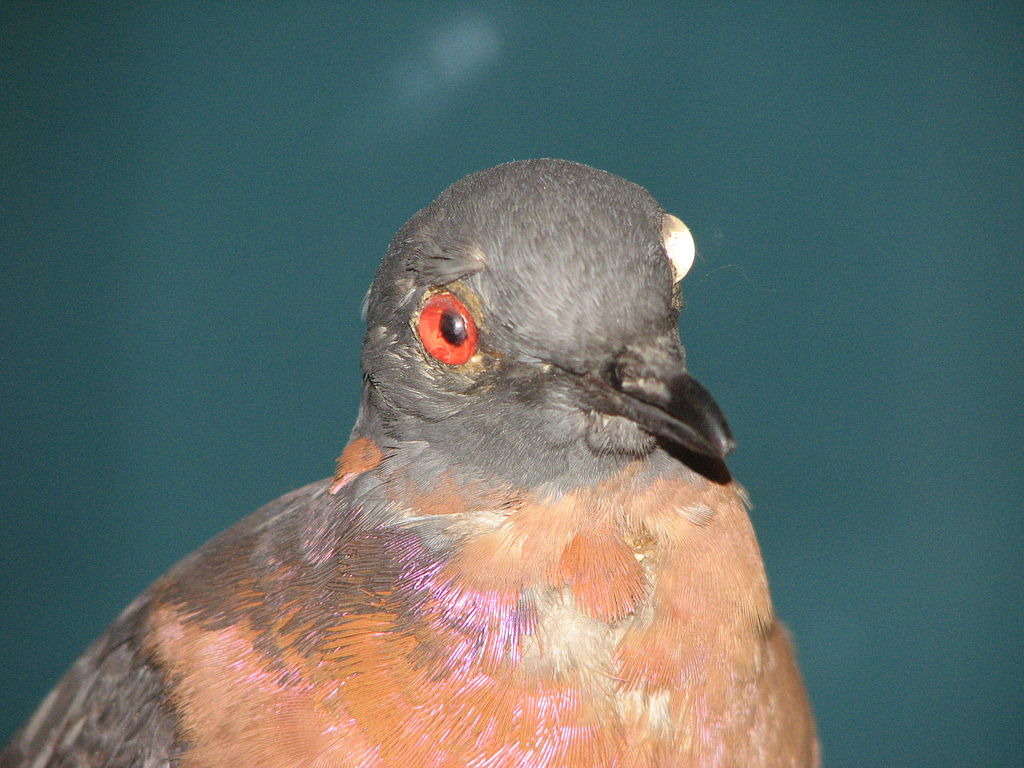 Photo 3. The last passenger pigeon died in a zoological garden in Ohio [scrittevolmente.com]
Photo 3. The last passenger pigeon died in a zoological garden in Ohio [scrittevolmente.com] The passenger pigeon belongs to the pigeon family; until the end of the 19th century it was the most common bird on Earth (there were approximately 3-5 billion individuals). The bird reached a length of 35-40 cm, weighing 250-340 g, distributed in the forests of North America. The extinction of the species occurred gradually due to many factors, the main one of which was human - poaching. The last pigeon died in 1914 in a zoological garden (USA).
2. Dinosaurs
 Photo 2. Skeleton of Spinosaurus - one of the largest dinosaurs in the Cretaceous period
Photo 2. Skeleton of Spinosaurus - one of the largest dinosaurs in the Cretaceous period Dinosaurs inhabited the Earth during the Mesozoic era - for more than 160 million years. In total, there were more than 1000 species, which can be clearly divided into ornithischian (theropods - “beast-footed” and sauropodomorphic “lizard-footed”) and saurischian (stegosaurs, ankylosaurs, ceratopsians, pachycephalosaurs and ornithopods) dinosaurs. The largest dinosaur is Spinosaurus, which is 16-18 meters long and 8 meters high. But not all dinosaurs were big - one of the smallest representatives weighed only 2 kg and was 50 cm long. Dinosaurs became extinct 65 million years ago, according to one hypothesis, the cause was the fall of an asteroid.
1. Dodo or Mauritian dodo
 Photo 1. The Mauritian dodo fell victim to hungry sailors and imported domestic animals
Photo 1. The Mauritian dodo fell victim to hungry sailors and imported domestic animals The dodo is an extinct species of flightless bird, was about 1 meter tall and weighed about 10-18 kg, and lived in the forests of Mauritius. With the arrival of man, many animals of Mauritius became extinct, as the island's ecosystem was damaged.
The law of nature “Survival of the fittest” and human activity have led to the extinction of very amazing species of animals, which, unfortunately, we will never be able to see with our own eyes again.
1. Megaladapis (koala lemurs)
Koala lemurs (lat. Megaladapis Edwarsi) were identified as a species only in 1894. They lived on the island of Madagascar from the end of the Pleistocene to the Holocene era. Some scientists considered Megaladapis to be the closest relatives of modern lemurs. However, according to the results of the studies, there is absolutely no connection between the small lepilemurs and the extinct koala lemurs, which had a skull the size of a gorilla.
The height of adult megaladapis reached 1.5 meters, and the weight was approximately 75 kilograms. Their front legs were longer than their hind legs. Because they were too heavy, they jumped poorly and probably most spent their lives on earth.
The first people appeared on the island of Madagascar about two thousand years ago. During this period of time, seventeen species of lemurs became extinct, the most notable of which - due to their enormous size - were Megaladapis. Radiocarbon dating shows that koala lemurs went extinct almost 500 years ago.
2. Wonambi
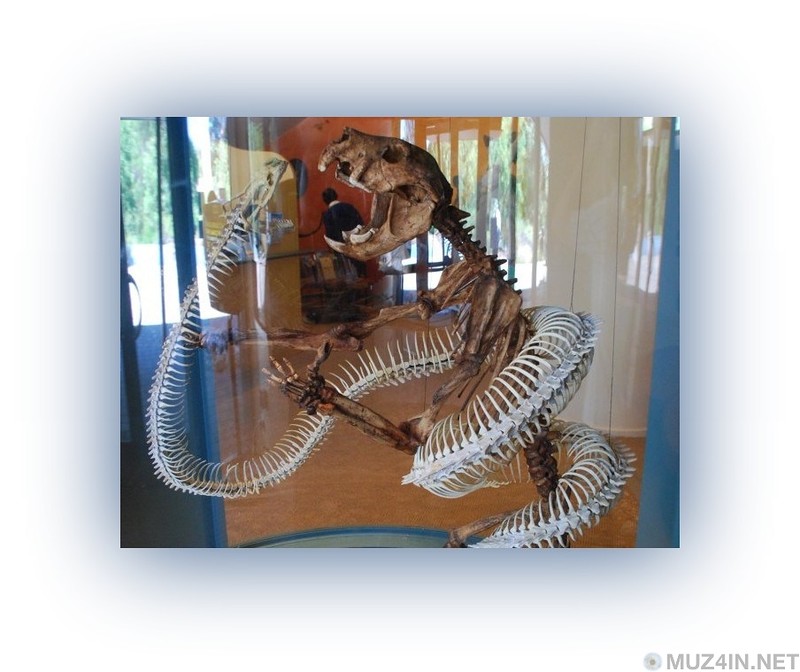
Wonambi (lat. Wonambi Naracoortensis) lived in Australia during the Pliocene era. "Wonambi" is translated from the local Aboriginal language as "rainbow snake". Unlike more developed snakes, the wonambi's jaw was inactive. Some scientists believe that wonambis were, from an evolutionary point of view, a cross between lizards and modern snakes.
The body length of the wonambi reached more than 4.5 meters. They had recurved teeth but no fangs. Most scientists agree that the Wonambi went extinct 40 thousand years ago.
3. Great auk
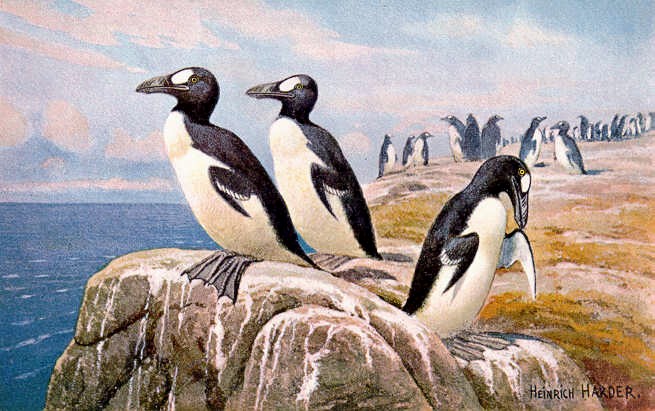
Great auks (lat. Pinguinus impennis) are bizarre black and white birds that could not fly. Great auks, nicknamed the “original penguins,” grew to about one meter in height. They had tiny wings about 15 centimeters long. Great auks lived in northern waters Atlantic Ocean close to countries such as Scotland, Norway, Canada, USA and France. They came to land only to reproduce.
Great auks became highly prized in the early 18th century. Their expensive feathers, leather, meat, oil and thirteen-centimeter eggs attracted hunters and collectors. Ultimately, great auks were threatened with extinction, but this only increased their demand.
On July 3, 1844, Sigurdur Isleifsson and two comrades went to the Icelandic island of Elday, where at that time the last colony of great auks lived. They found a male and a female there who were hatching an egg. The men, hired by a rich merchant, killed the birds and crushed the egg. This was the only pair of great auks in the world.
The last representative of the great auk species was seen in 1852 in the waters of the Great Bank of Newfoundland (Canada).
4. Schomburgk's deer
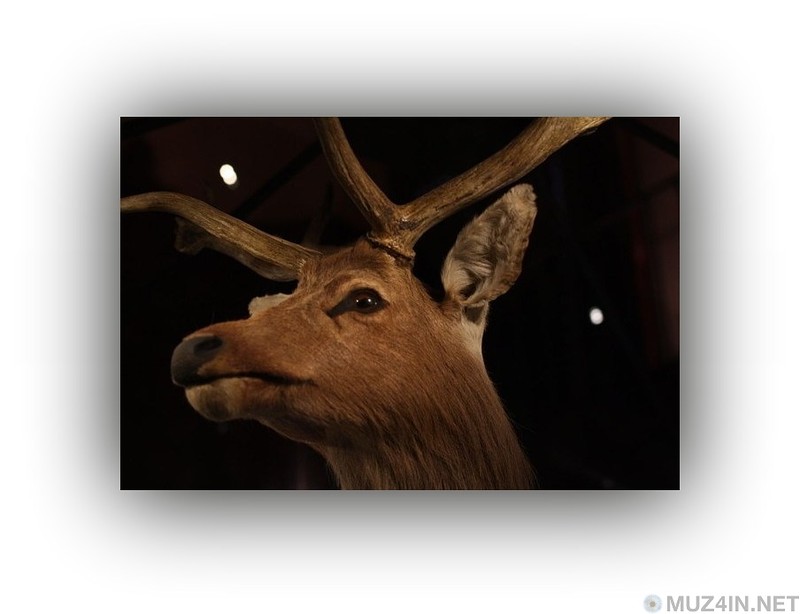
Once upon a time, hundreds of thousands of Schomburgk's deer (Latin Rucervus Schomburgki) lived in Thailand. The animals were described and identified as a species in 1863. They were named after the then British Consul in Bangkok, Sir Robert Schomburgk. According to scientists, they became extinct in the 1930s. Some believe that Schomburgk's deer still exist, but scientific observations, unfortunately, have not confirmed this assumption.
The Thais believed that the antlers of Schomburgk's deer had magical and healing power Therefore, these animals often became the prey of hunters, who then sold them to people practicing traditional medicine. During floods, Schomburgk's deer congregated on higher ground; for this reason, killing them was not particularly difficult: they, in fact, had nowhere to run.
Last wild deer The Schomburgka was killed in 1932 and domesticated in 1938.
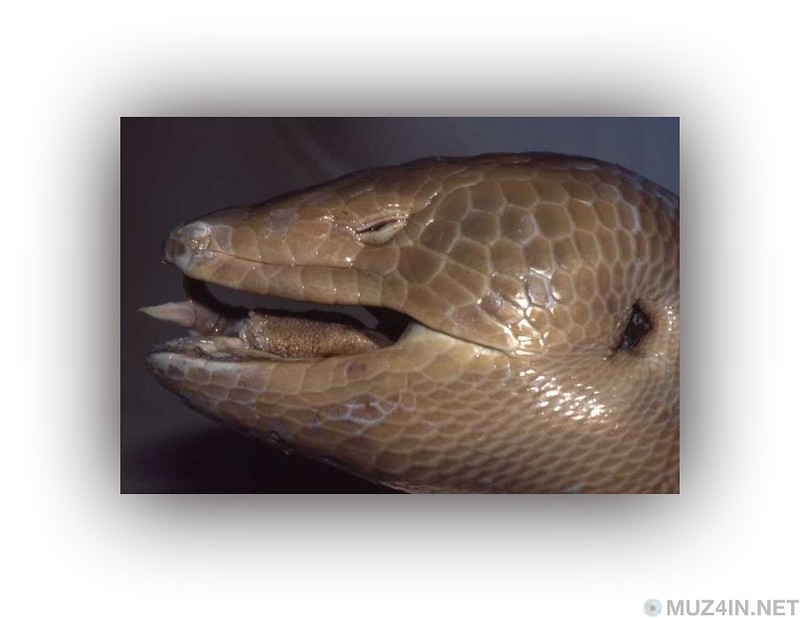
The last time representatives of the Jamaican giant (or drowning) gallivasp (lat. Celestus Occiduus) were seen was in 1840. The body length of Jamaican giant gallisps reached 60 centimeters. With their appearance they inspired fear and horror in local residents. Their disappearance is likely due to the appearance of predators in Jamaica, such as mongooses, for example, as well as human factors.
Jamaicans believe that Gallivasps are poisonous animals. According to legend, whoever gets to the water first - the Gallivasp or the person it bit - will live. However, the island's inhabitants don't have to worry about the giant gallispap now, as they went extinct over a century ago. Very little is known about this species. Jamaican giant galliwasps, according to available information, lived in swamps and ate fish and fruits.
6. Argentavis
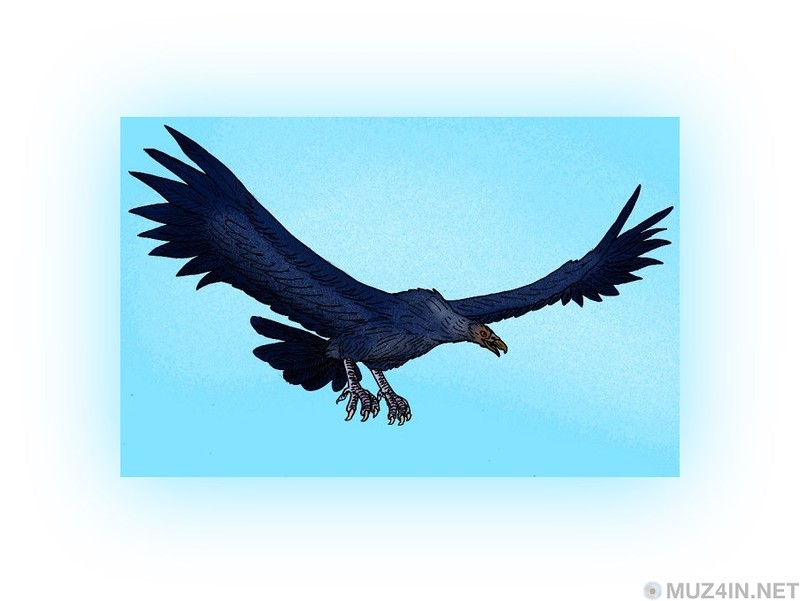
The skeleton of Argentavis Magnificens was discovered in Miocene rocks in Argentina; this suggests that representatives of this species lived in South America six million years ago. They are believed to be the largest flying birds that have ever existed on Earth. Argentavis's height reached 1.8 meters, and its weight reached 70 kilograms; its wingspan was 6-8 meters.
Argentavis belonged to the order Accipitridae. This also includes hawks and vultures. Judging by the size of the Argentavis skull, they swallowed their prey whole. Their life expectancy, according to various estimates, ranged from 50 to 100 years.
7. Barbary lion
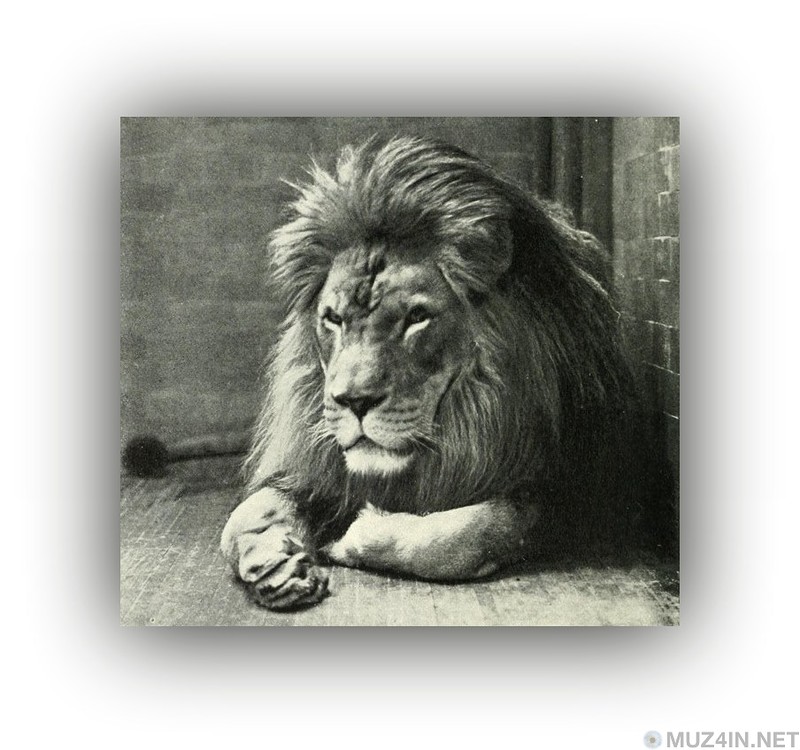
Barbary lions (lat. Panthera Leo Leo) lived in North Africa. They did not roam in packs, but in pairs or small family groups. The Barbary lion was quite easy to recognize by its characteristic head shape and mane.
The last wild Barbary lion was killed in Morocco in 1927. The Moroccan Sultan had several domesticated Barbary lions in captivity. They were transferred to local and European zoos for further breeding.
It is known that during the Roman Empire, Barbary lions took part in gladiator fights.
8. Laughing Owl
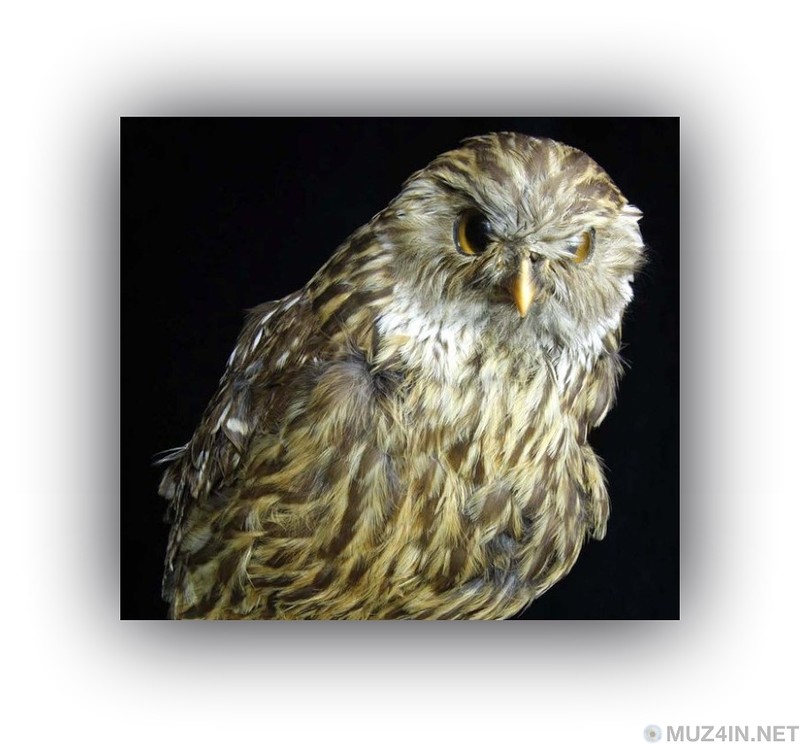
Laughing owls (lat. Sceloglaux Albifacies) lived in New Zealand. They became endangered in the mid-19th century. The last laughing owl was seen on the island in 1914. According to unconfirmed reports, this type lasted until the early 1930s. The cry of a laughing owl sounded like an eerie laugh or the laughter of a distraught man. The volume was comparable to the barking of a dog.
Laughing owls nested on rocks within the tree line or in open areas. There were people who tried to domesticate these birds, and in principle they did a good job. Laughing owls, even in captivity, laid eggs without stimulation. Habitat destruction has forced laughing owls to change their diet. They switched from birds of fairly decent size (for example, ducks) and lizards to mammals. Apparently, this, along with factors such as grazing and slash-and-burn agriculture, led to their extinction.
9. Blue Antelope
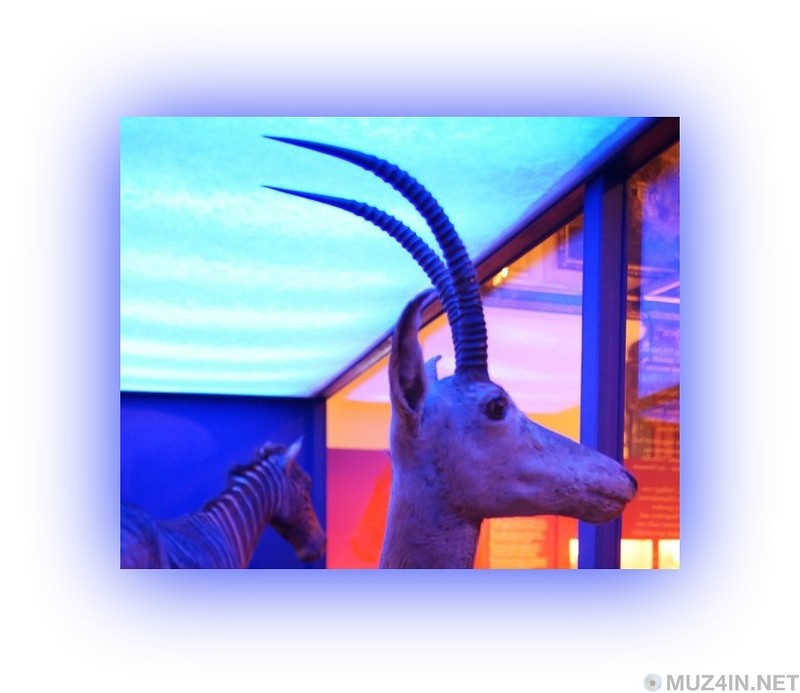
This antelope got its name from the bluish tint of its black and yellow coat. Blue antelopes (lat. Hippotragus Leucophaeus) once lived in South Africa. They ate grass, as well as the bark of trees and shrubs. Blue antelopes were social and most likely nomadic animals. Before humans appeared, they were hunted by African lions, hyenas and leopards.
The blue antelope population began to decline markedly about 2,000 years ago. In the 18th century they were already considered an endangered species. Predators, climate change, hunters, disease and even proximity to animals such as sheep are the main factors leading to the extinction of blue antelopes. The last representative of the species was killed by hunters in 1799.
10. Woolly rhinoceros
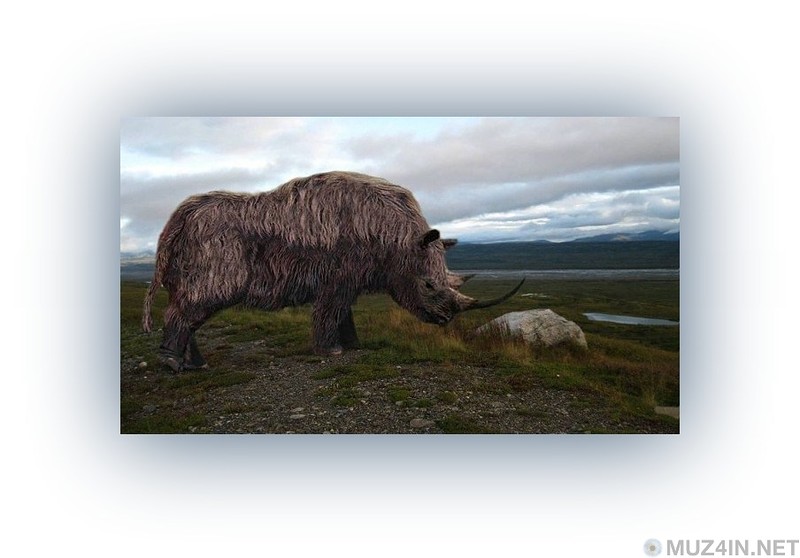
The remains of the woolly rhinoceros (lat. Coelodonta Antiquitatis), who lived 3.6 million years ago, were found in Asia, Europe and North Africa. Scientists initially mistook the huge horn of one woolly rhinoceros for the claw of a prehistoric bird.
Woolly rhinoceroses lived in the same territory as woolly mammoths. In France, archaeologists have discovered caves on the walls of which were depicted drawings of woolly rhinoceroses made 30 thousand years ago. Primitive people hunted woolly mammoths, which is why these animals became the subject of cave art. In 2014, a spear was found in Siberia, created from the horn of an adult woolly rhinoceros more than 13 thousand years ago. Woolly rhinoceroses are believed to have gone extinct at the end of the last Ice Age about 11,000 years ago.
11. Quagga - half zebra and half horse, completely extinct in 1883
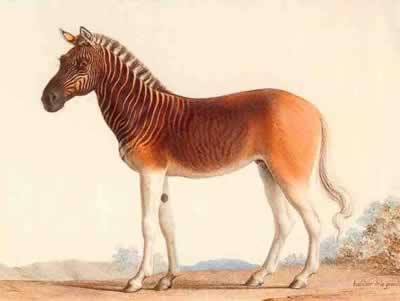
The quagga is one of South Africa's most famous extinct animals and was a subspecies of zebra. Quaggas were very trusting and amenable to training, which means they were instantly tamed by humans and got their name from the word “Koi-Koi,” with which the owner called his animal.
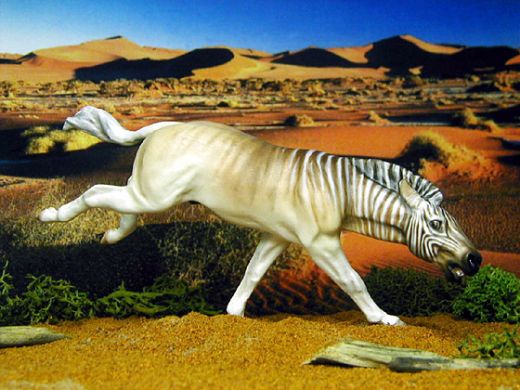
In addition to being extremely friendly, Quaggas were also very tasty, and their skin was worth its weight in gold. It was these reasons that caused the complete extermination of these animals. By 1880, there was only one Quagga in the world, which died in captivity on August 12, 1883 at the Artis Magistra Zoo in Amsterdam. Due to much confusion between the different zebra species, the quagga became extinct before it was clear that it was a separate species. By the way, Quagga became the first extinct animal whose DNA was studied.
12. Steller's cow, completely extinct in 1768
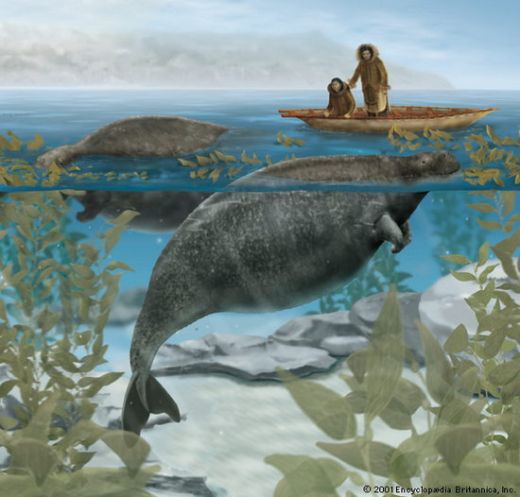
This species of sea cow lived near the Asian coast Bering Sea. These unusual animals were discovered by traveler and naturalist Georg Steller in 1741. The gigantic creatures immediately amazed Steller with their size: adult specimens reached 10 meters in length and weighed up to 4 tons. The animals looked like huge seals and had massive forelimbs and a tail. According to Steller, the animal never came out of the water onto the shore.
These animals had dark, almost black skin, which resembled the bark of a cracked oak trunk, the neck was completely absent, and the head, set directly on the torso, was very small in size compared to the rest of the body. Steller's cow mainly fed on plankton and small fish, which it swallowed whole, due to the fact that it had no teeth.
People valued this animal for its fat. Because of him, the entire population of this unusual animal was exterminated.
13. Irish Deer - a giant deer that went extinct 7,700 years ago
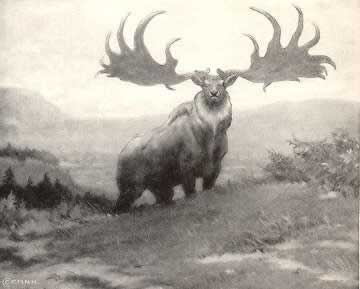
The Irish Deer is the largest artiodactyl that has ever existed on planet Earth. These animals lived in huge numbers in Eurasia. The last discovered remains of a giant deer date back to 5700 BC.
These deer reached 2.1 meters in length and had huge antlers, which in adult males reached 3.65 meters in width. These animals lived in the forest, where, due to the size of their horns, they were easy prey like any small predator, and a person.
14. Dodo, completely extinct in the 17th century
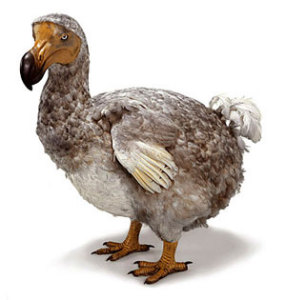
The Dodo (or Dodo) was a species of flightless bird that lived on the island of Mauritius. The dodo belonged to the pigeon-like species, but was distinguished by its enormous size: adult individuals reached up to 1.2 meters in height and weighed up to 50 kg. Dodos ate mostly fruit that fell from trees and built nests on the ground, and given that their meat was tender and juicy from a fruit diet, they became a real treat for anyone who could get their hands on them. But, fortunately for the Dodos, there were absolutely no predators on the island of Mauritius. This idyll continued until the 17th century, when Europeans landed on the island. Hunting for Dodo became the main source of replenishment of ship supplies. Dogs, cats and rats were brought to the island with people, who happily ate the eggs of helpless birds.
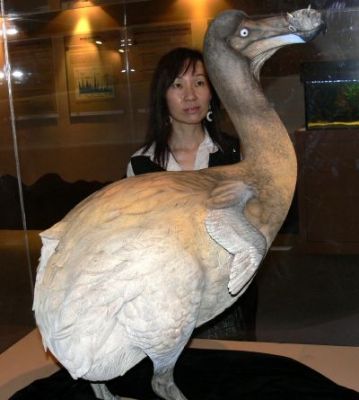
The dodos were helpless in the literal sense of the word: they could not fly, they ran slowly, and hunting for them came down to slowly catching up with the fleeing bird and hitting it on the head with a stick. In addition to everything, Dodo was as trusting as a child, and as soon as people lured him with a piece of fruit, the bird itself approached him. dangerous predator On the Earth.
15. Thylacine - Marsupial Wolf, completely extinct in 1936
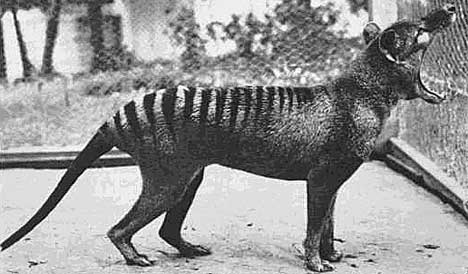
The thylacine was the largest carnivorous marsupial. It is commonly known as the Tasmanian Tiger (due to its striped rear part) and also as the Wolf of Tasmania. The marsupial wolf was extirpated from the Australian mainland thousands of years before European settlement of the continent, but survived in Tasmania, along with other marsupials (such as like the well-known Tasmanian Devil).
Thylacines had disgusting meat, but excellent skin. Clothing made from the skin of this animal could warm a person in the most severe frost, so the hunt for this wolf did not stop until 1936, when it turned out that all individuals had already been exterminated.
16.Passenger pigeon
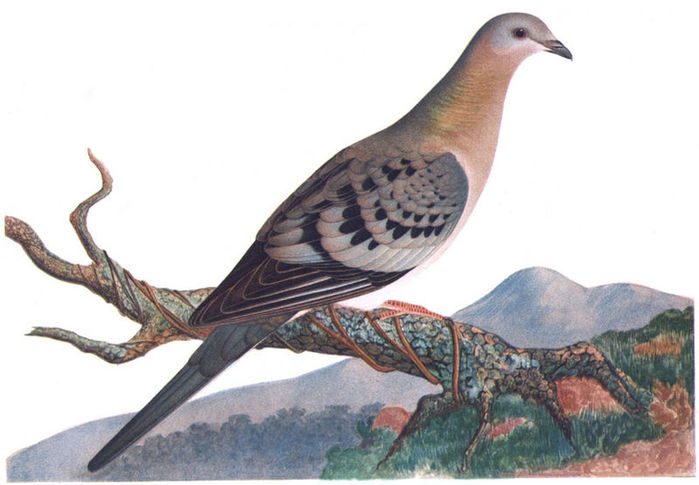
One example of human-caused disappearance is passenger pigeon. Once upon a time, multi-million flocks of these birds flew in the sky North America. Seeing food, the pigeons rushed down like huge locusts, and when they were full, they flew away, completely destroying fruits, berries, nuts, and insects. Such gluttony irritated the colonists. Moreover, the pigeons tasted very good. One of Fenimore Cooper’s novels describes how, when a flock of pigeons approached, the entire population of cities and towns poured out into the streets, armed with slingshots, guns, and sometimes even cannons. They killed as many pigeons as they could kill. The pigeons were placed in ice cellars, cooked immediately, fed to dogs, or simply thrown away. There were even pigeon shooting competitions, and towards the end of the 19th century, machine guns began to be used.
The last passenger pigeon, named Martha, died at the zoo in 1914.
16.Tour
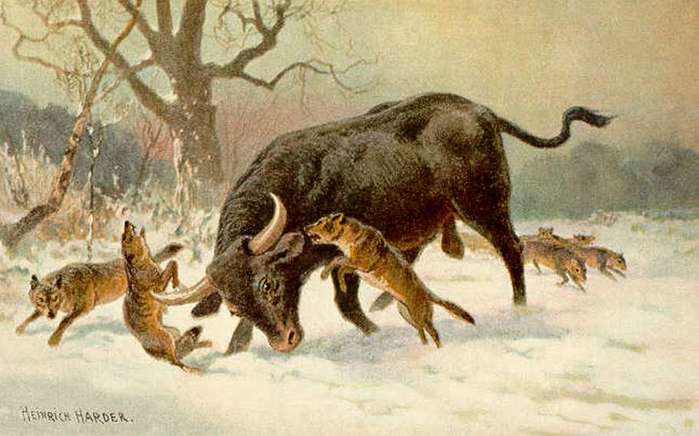
It was a powerful beast with a muscular, slender body, about 170-180 cm high at the withers and weighing up to 800 kg. The high-set head was crowned with long, sharp horns. The color of adult males was black, with a narrow white “strap” along the back, while females and young animals were reddish-brown. Although the last aurochs lived out their days in the forests, previously these bulls stayed mainly in the forest-steppe, and often entered the steppe. They probably migrated to the forests only in winter. They ate grass, shoots and leaves of trees and shrubs. Their rut occurred in the fall, and the calves appeared in the spring. They lived in small groups or alone, and for the winter they united in larger herds. The aurochs had few natural enemies: these strong and aggressive animals could easily cope with any predator.
In historical times, the tour was found throughout almost all of Europe, as well as in North Africa, Asia Minor and the Caucasus. In Africa, this animal was exterminated in the third millennium BC. e., in Mesopotamia - around 600 BC. e. In Central Europe, tours survived much longer. Their disappearance here coincided with intensive deforestation in the 9th-11th centuries. In the 12th century, aurochs were still found in the Dnieper basin. At that time they were actively exterminated. Records of the difficult and dangerous hunt for wild bulls were left by Vladimir Monomakh.
By 1400, aurochs lived only in relatively sparsely populated and inaccessible forests in the territory of modern Poland, Belarus and Lithuania. Here they were taken under the protection of the law and lived as park animals on royal lands. In 1599, a small herd of aurochs - 24 individuals - still lived in the royal forest 50 km from Warsaw. By 1602, only 4 animals remained in this herd, and in 1627 the last aurochs on Earth died
17.Moa
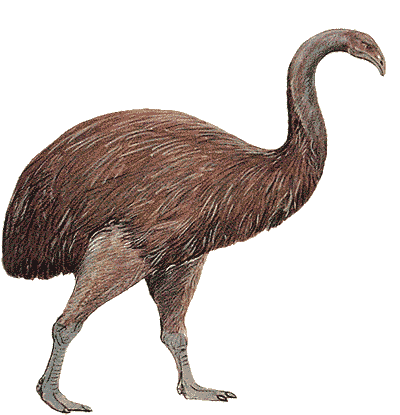
Moa is a flightless bird similar to an ostrich. Lived on the islands of New Zealand. It reached a height of 3.6 m. After the first Polynesian settlers arrived on the islands, the number of Moas began to decline rapidly. The birds were too large and slow to hide from hunters, and by about the 18th century, Moas had completely disappeared from the face of the earth.
18.Epiornis
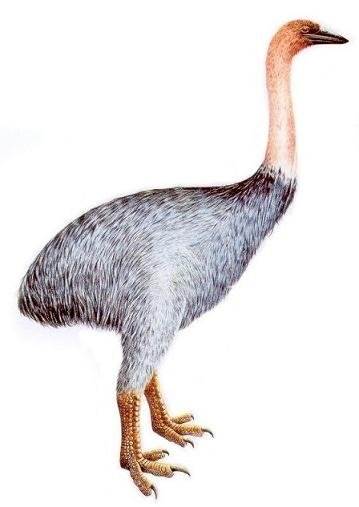
Epiornis were birds very similar to Moa, with only one difference - they lived in Madagascar. Over 3 meters tall and weighing over 500 kilograms, they were real giants. Epiornis lived quite prosperously in Madagascar until the moment when people began to populate it. Before humans, they had only one natural enemy - the crocodile. Around the 16th century, Epiornis, also known as Elephant Birds, were completely exterminated.
19.Tarpan
Tarpan was the ancestor of the modern horse. It’s hard to believe, but back in the 18th and 19th centuries it was widespread in the steppes of the European part of Russia, a number of European countries and in Western Kazakhstan. Unfortunately, tarpan meat was very tasty and people exterminated them for this very reason. The main culprits for the disappearance of tarpans are Catholic monks, who, being horse eaters, exterminated them in huge quantities. Eyewitnesses of these events wrote that the monks mounted fast horses and simply drove herds of horses. As a result, only foals that could not endure a long race were caught.
20.Japanese Hondo Wolf
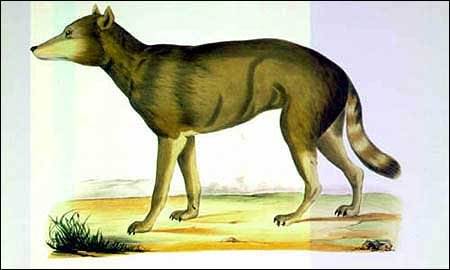
The Japanese wolf was common on the islands of Honshu, Shikoku and Kyushu of the Japanese archipelago. He was the smallest among all wolves. The rabies epidemic and extermination by humans brought the wolf to complete extinction. The last Hondos wolf died in 1905.
21.Falkland fox (Falkland wolf)
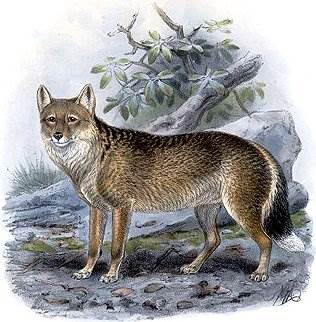
The Falkland fox was tan in color with black ears, a black tip of the tail and a white belly. The fox barked like a dog and was the only predator on the Falkland Islands. There was no sign of her disappearance, since she had plenty of food. Even then, in 1833, Charles Darwin, describing this wonderful animal, predicted its disappearance, since it was uncontrollably shot by hunters because of its thick and valuable fur. In addition, the fox was poisoned, allegedly posing a great threat to sheep and other domestic animals.
The Falkland wolf had no natural enemies and he naively trusted people, not even imagining that they were his worst enemy. As a result, the last fox was killed in 1876.
22.Baiji- Chinese river dolphin.
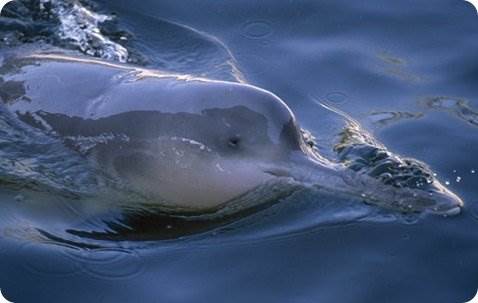
People did not hunt the Chinese river dolphin, which lived in the Yangtze rivers of Asia, but were indirectly involved in its extinction. The waters of the river were overflowing with merchant and cargo ships, which simply polluted the river. In 2006, a special expedition confirmed the fact that Baiji no longer exists on earth as a species.
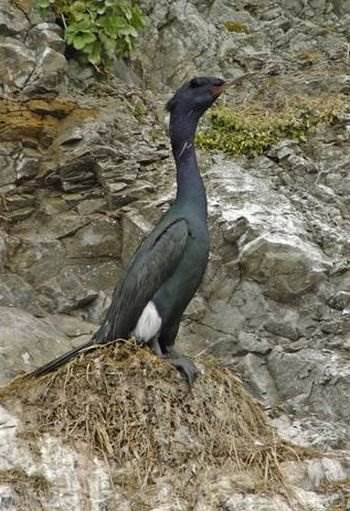
Reminded me of a penguin. Sailors hunted them because their meat was tasty, and catching this bird was not difficult. As a result, in 1912 the latest information about the Steller Cormorant was received.
